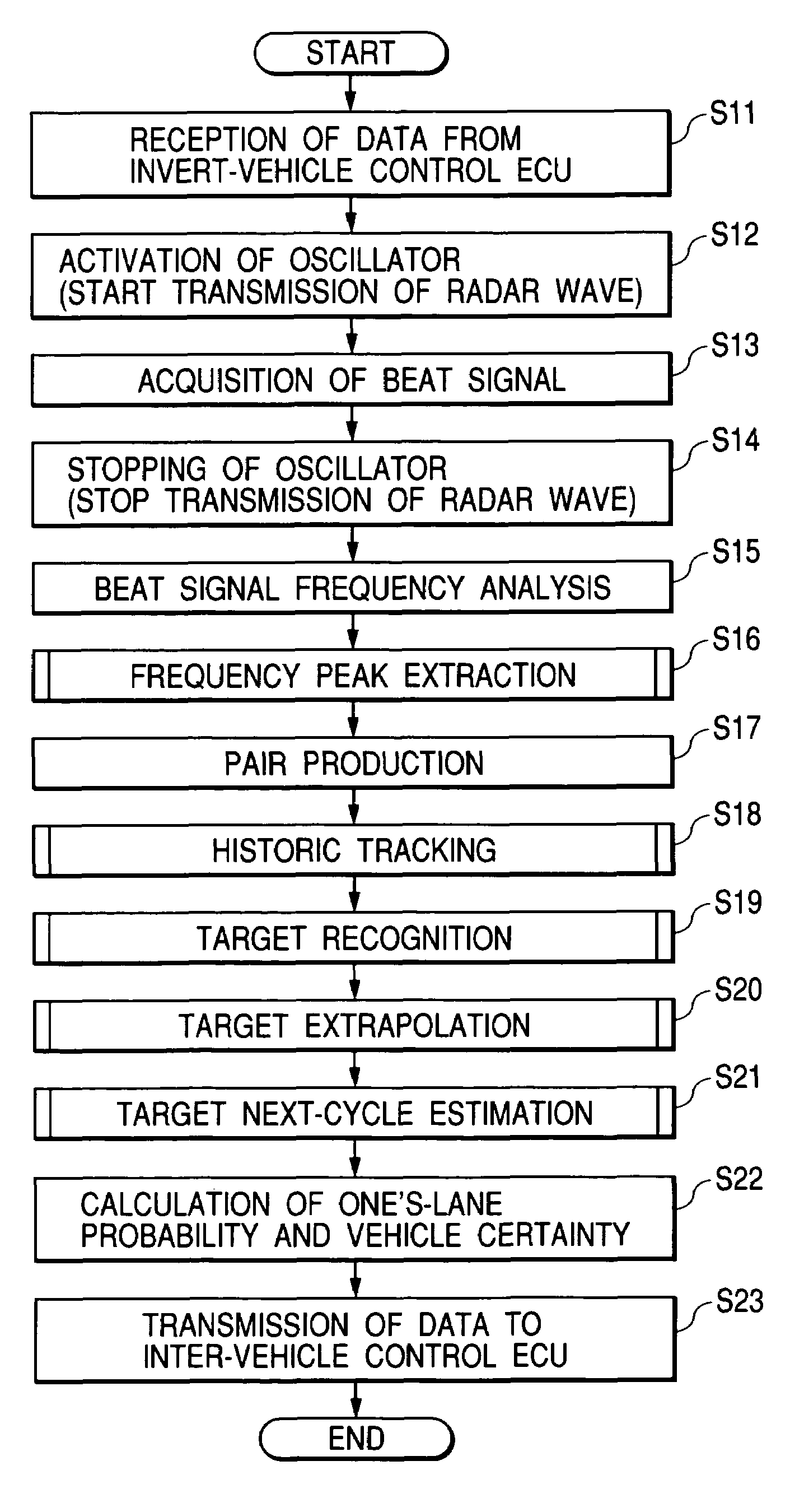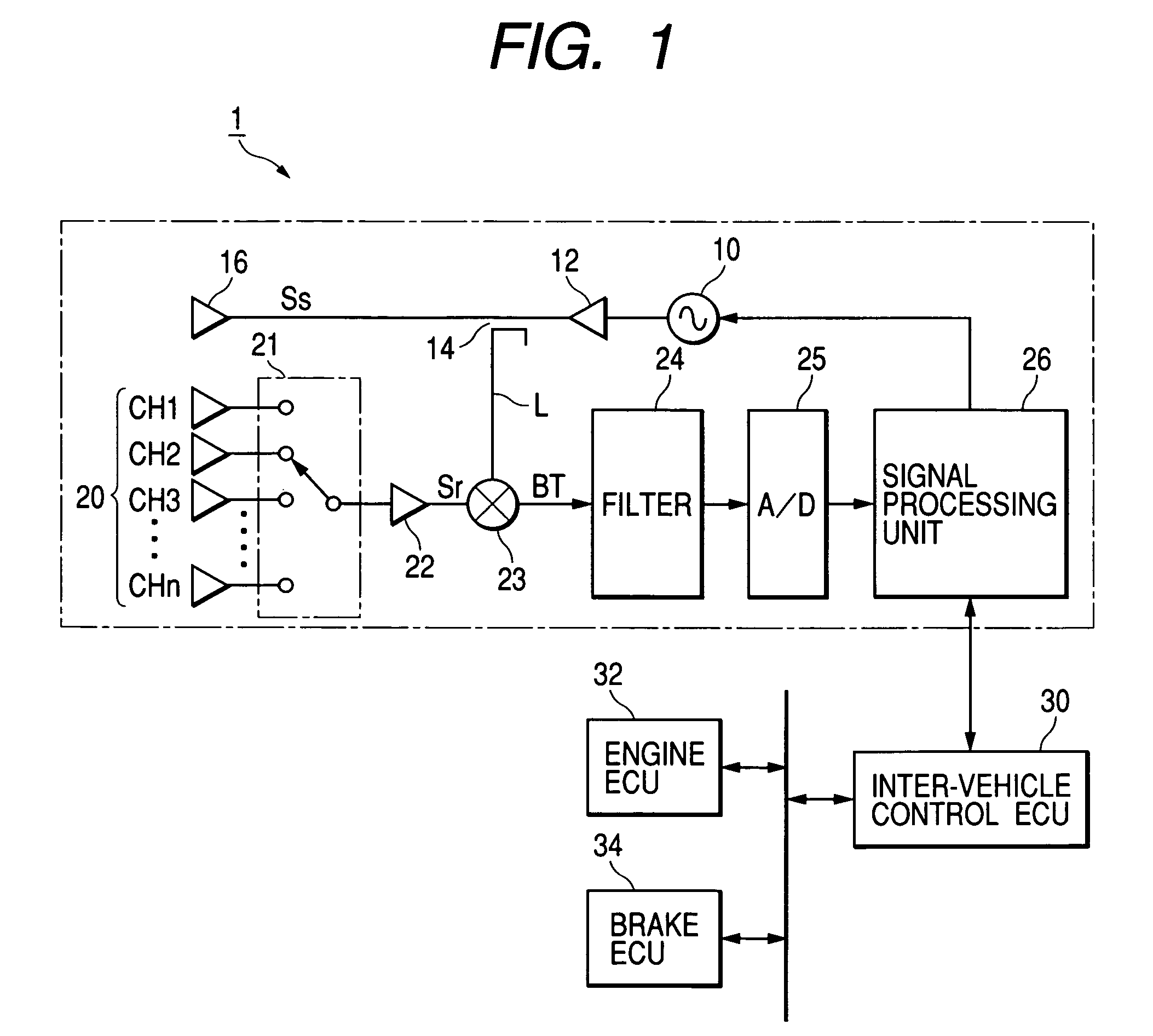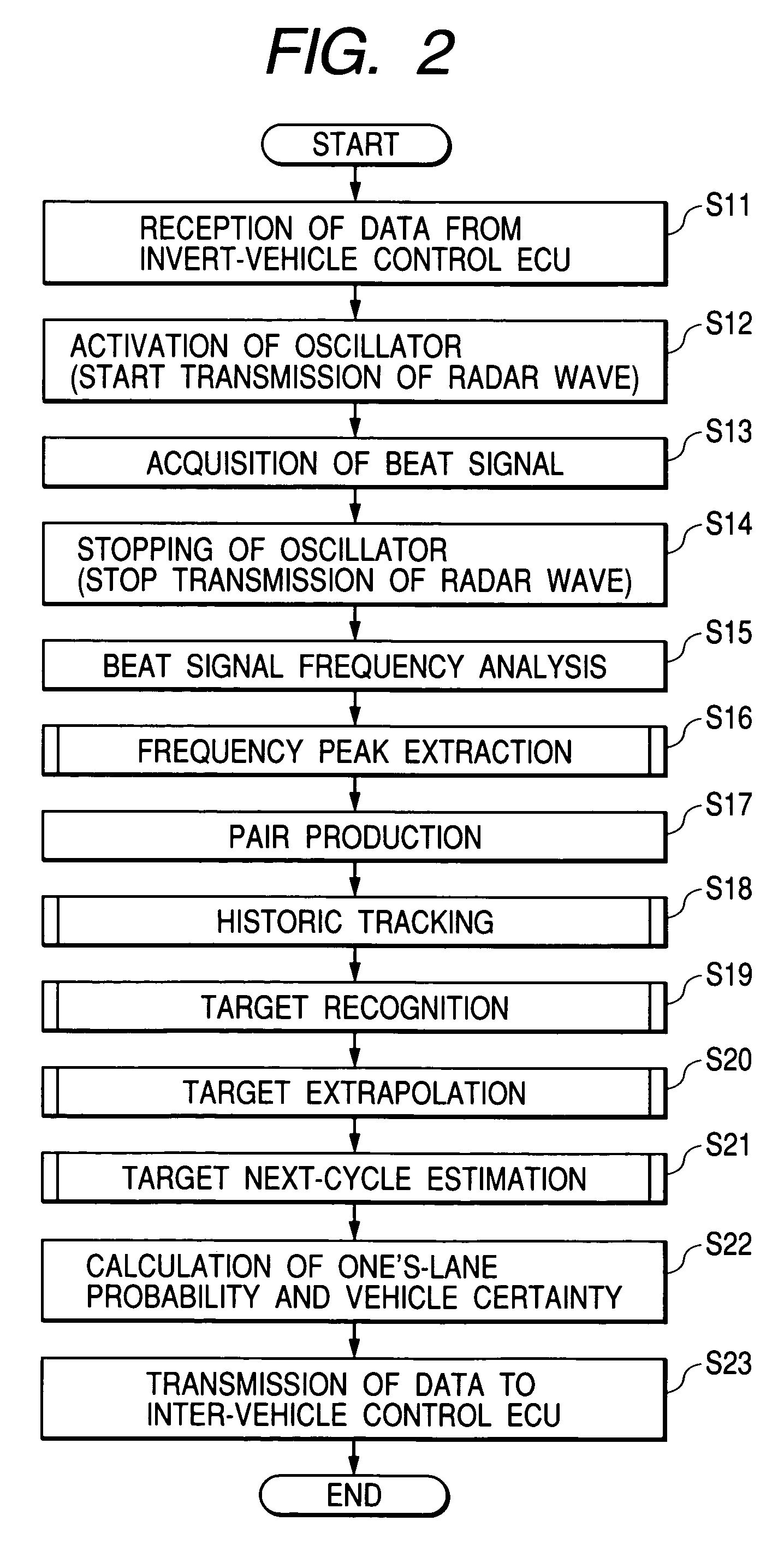Radar apparatus, and program therefor
a technology of radar and target, applied in the field of radar apparatus, can solve the problems of difficult detection of target peak, complication and size expansion of the apparatus, and achieve the effect of accurate detection
- Summary
- Abstract
- Description
- Claims
- Application Information
AI Technical Summary
Benefits of technology
Problems solved by technology
Method used
Image
Examples
Embodiment Construction
[0034]An embodiment of the present invention will be given hereinbelow with reference to the drawings.
[0035]FIG. 1 is a block diagram showing the outline of a configuration of a cruise control system based upon the present invention.
[0036]In FIG. 1, the cruise control system is made up of an inter-vehicle control electronic control unit (which will be referred to hereinafter as an “inter-vehicle control ECU”) 30, and engine electronic control unit (which will be referred to hereinafter as an “engine ECU”) 32 and a brake electronic control unit (which will be referred to hereinafter as a “brake ECU”) 34, which are connected through LAN communication buses to each other. Moreover, each of the ECUs 30, 32 and 34 is based on a well-known microcomputer and is equipped with at least a bus controller for making communications through the LAN communication buses. Incidentally, in this embodiment, the data communications among the ECUs are made through the use of a CAN (“Controller Area Netw...
PUM
 Login to View More
Login to View More Abstract
Description
Claims
Application Information
 Login to View More
Login to View More - R&D
- Intellectual Property
- Life Sciences
- Materials
- Tech Scout
- Unparalleled Data Quality
- Higher Quality Content
- 60% Fewer Hallucinations
Browse by: Latest US Patents, China's latest patents, Technical Efficacy Thesaurus, Application Domain, Technology Topic, Popular Technical Reports.
© 2025 PatSnap. All rights reserved.Legal|Privacy policy|Modern Slavery Act Transparency Statement|Sitemap|About US| Contact US: help@patsnap.com



